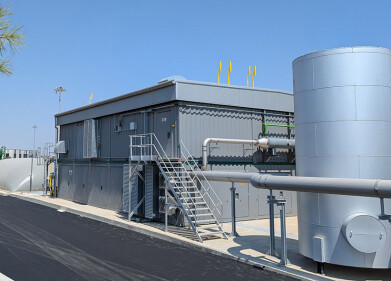Air clean up
Scientists Conclude Trees are Most Cost Effective Way of Tackling Urban Air Pollution
Apr 22 2017
Scientists at EarthSense Systems have completed a research project into the economic effectiveness of different schemes to reduce air pollution. In a study of Europe’s favourite shopping area, Oxford Street, the project team compared the comparative performance of a range of options, including trees, solid barriers and even a special paint that uses light to activate a chemical reaction to reduce the accumulation of pollution. The study will inform investment decisions for critical infrastructure in future cities, helping to protect residents against the damaging effects of harmful emissions.
EarthSense simulated airflows and pollution dispersion, taking into account local weather conditions. Solid barriers, with or without an application of the innovative photocatalytic paint, were shown to improve air quality on pavements and roads, yet the use of the paint on building facades had little impact. Planting of trees also showed a reduction in pollutant levels for the particular geometry of Oxford Street and, at up to 100 times cheaper than other strategies, was concluded to be the most cost effective.
“Road traffic emissions are the largest contributors of air pollution in the urban environment, accounting for up to 40 percent of the total NO2 emissions in Europe and contributing between 47 and 53 percent of all emissions in London. Studies have also directly linked outdoor air pollution with hospital admissions for various cardiovascular and respiratory conditions in our capital,” commented Dr Antoine Jeanjean, Head of Modelling at EarthSense Systems.
There are various types of mitigation strategies available and they can be broadly defined as ‘control of quantity’, for example congestion charging, ‘control of emission intensity’, for example carbon tax, and ‘control of source-receptor pathways’, for example passive control measures that block the source or pathway of emissions. The EarthSense Oxford Street study focused on strategies that used control of source-receptor pathways, and considered measures that improved the aerodynamic dispersion of emissions.
“Improving aerodynamic dispersion can be achieved by altering street geometry or introducing barriers. Green infrastructure or the application of specialist coatings can also be used to promote pollutant deposition and therefore reduce NO2 concentrations,” continued Dr Jeanjean. “However, these mitigation strategies can only deliver minimum reductions in air pollution, so it is imperative that vehicle emissions are targeted at source if we are to improve urban air quality.”
EarthSense Systems is a joint venture between aerial mapping company Bluesky and the University of Leicester.
Events
May 18 2025 Algiers, Algeria
23rd International Water Management Exhibition
May 20 2025 Prague, Czech Republic
Jun 17 2025 Guangzhou, China
Singapore International Water Week Spotlight 2025
Jun 23 2025 Singapore
Jun 25 2025 Sao Paulo, Brasil














